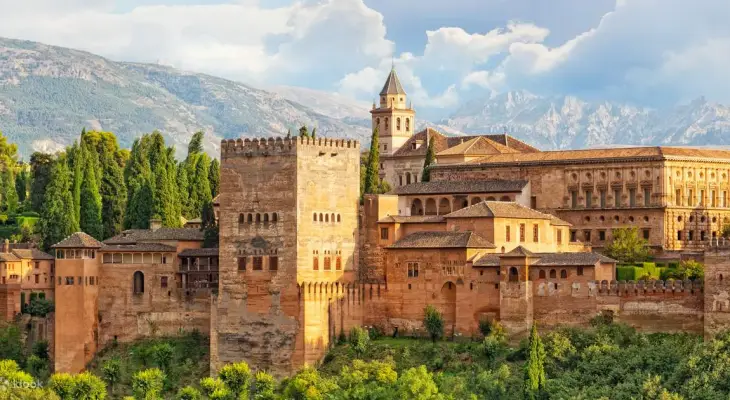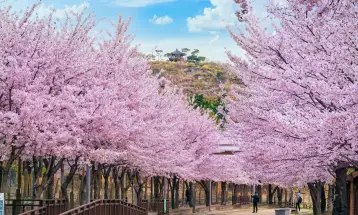History of the Beauty of the Alhambra Palace in Spain

Holiday Ayo - In a video, a tourist can be seen chanting the call to prayer inside the Alhambra Palace, Spain. The video immediately went viral on social media. The melodious sound of the call to prayer broke the silence of the magnificent Alhambra Palace.
The Alhambra Palace itself is a symbol of the history of Islamic civilization in Europe, especially the Andalusian region which is now known as Spain. The palace building was not only a shelter for the royal family, but also functioned as a fortress of defense and protection for its people.
Since 1984, the Alhambra Palace, which was built in 1238-1358, has been designated by UNESCO as a world cultural heritage site.

source:Klook
The Alhambra Palace stands firmly on La Sabica Hill, Granada, Spain and was founded by the kingdom of Bani Ahmar or the Moors (Moria) from North Africa in stages between 1238 AD to 1358 AD.
The Moors were the rulers of the last Muslim kingdom in Andalusia (Spain) during the reign of the Bani Ahmar Dynasty (1232-1492 AD). This kingdom was founded by Sultan Muhammad bin Al-Ahmar or Bani Nasr who is still a descendant of Sa'id bin Ubaidah.
Outside the palace, a garden was built with beautiful flowers that bloom every spring. There is also a place called Hausyus Sibb (Lion Garden) which is surrounded by 128 pillars made of marble. In this garden there is a fountain pool decorated with 12 lion statues lined up in a circle. Meanwhile, inside the palace there are rooms built with beautiful and magnificent architecture.
 source: Spain Less Traveled
source: Spain Less Traveled
Among other things, the Al-Hukmi Room (Baitul Hukmi), a courtroom with an area of 15 mx 15 m which was built by Sultan Yusuf I (1334-1354). Bani Siraj Room (Baitul Bani Siraj), a square room with a building area of 6.25 mx 6.25 m filled with Arabic calligraphy decorations.
Next there is a shower room (Hausy ar-Raihan) measuring 36.6 m x 6.25 m. There is also Al-Birkah or pool in the middle with a floor made of white marble. The area of this pool is 33.50 m x 4.40 m with a depth of 1.5 m.
Besides that, there is also Jennat Al-Arif or commonly called the Garden of the Architect, a special king's villa located at the end of the Alhambra garden. In this place, the king could see firsthand the sights of Albayzin --an ancient Arab village-- thus making it easy for the king to see and control the daily lives of his people.








Leave a comment